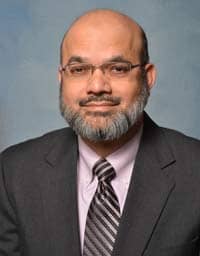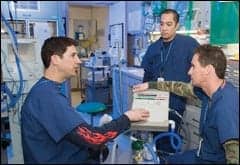By Arif Subhan, MS, CCE, FACCE

1) Technician Education2
2) Device User/Nurse Training
3) Develop/Manage Staff Training Plan3
4) Engineering Education
5) Other Education Responsibilities
6) International Healthcare Technology Management
In this article, I will focus on the fifth topic, “Other Education Responsibilities.” This topic includes the effective use of on-the-job training, mentoring, and coaching of biomedical equipment technicians and clinical engineers.
Mentoring
Mentoring is the offering of advice, information, or guidance by a person (a mentor) who has useful experience, skills, or expertise that help in the personal and professional development of another individual (a protégé).4
An experienced BMET or a clinical engineer can take on the role of a mentor in the workplace. They can have a formal or even informal mentoring relationship with coworkers, employees, and interns (protégés) in their department.
Goal of Mentoring
The goal of mentoring is to support the development of the protégé through both “career” and “psychosocial” functions.
The career functions of mentoring are made up of sponsorship, coaching, protection, exposure, and challenge. These functions are “on-the-job” activities, and their purpose is to enhance the protégé’s abilities and standing in the workplace.
The psychosocial functions consist of role modeling, counseling, acceptance, and friendship.
Combined, the career and psychosocial functions of a mentor help the protégé in addressing the challenges of each stage of the career of the protégé.4,5 Each of these “career” and “psychosocial” functions is explained below.5
The Functions of Mentoring
Sponsorship. The mentor helps open opportunities for the protégé that would otherwise be closed to him or her. Examples would include the mentor recommending the protégé to a national committee or leadership position within a national clinical engineering organization and introducing the protégé to the “movers and shakers” of the clinical engineering profession.
Coaching. The mentor teaches the protégé about the different facets of clinical engineering, and demonstrates and explains the roles and responsibilities of a BMET or a clinical engineer. During the course of mentoring, the mentor provides constructive feedback on the protégé’s work.
Protection. The mentor supports the protégé in his or her day-to-day work, and acts as a shield as the protégé navigates the career maze and deals with the challenges of being a BMET or a clinical engineer.
Challenge. The mentor encourages and supports new ways of thinking and working as a BMET or a clinical engineer. The protégé is encouraged and nudged to take on stretch assignments or projects that will enhance his or her knowledge of clinical engineering. These would include managing new and complex medical technologies and taking on additional clinical engineering responsibilities.
Exposure and visibility. The mentor directs the protégé into high-profile projects, major equipment installations, and committees at the hospital. This helps make the protégé known to the senior management and leadership.
Role Modeling. The mentor exhibits the kinds of actions, attitudes, and standards that lead to success in the organization. This includes interaction with clinical, nursing, and administrative staff, as well as with the leaders within the organization.
Counseling. The mentor assists the protégé in dealing with difficult professional problems, including switching jobs, pursuing higher education, and career planning.
Acceptance. The mentor supports the protégé in the workplace and exhibits care and respect towards the protégé.
Friendship. The mentor exhibits individual consideration that goes outside and beyond professional requirements, if acceptable to the protégé, such as assisting in personnel issues.
Review Questions
1) The “Other Education Responsibilities” for a clinical engineer include which of the following:
a) On-the-job training
b) Mentoring
c) Coaching
d) All of the above
2) The person who offers advice, information, or guidance that helps in the personal and professional development of an individual is called a _____.
a) Mentor
b) Protégé
c) Mentee
d) None of the above
3) The mentoring relationship between a mentor and protégé can be
a) Formal
b) Informal
c) Both a and b
d) None of the above
4) The career function of mentoring that helps open opportunities for the protégé that would otherwise be closed is called _____.
a) Sponsorship
b) Coaching
c) Role modeling
d) Counseling
5) The career function of mentoring that encourages and nudges the protégé to take on stretch assignments or projects that will enhance their knowledge of clinical engineering is called _____.
a) Sponsorship
b) Coaching
c) Challenge
d) Counseling
References
1. Healthcare Technology Certification Commission (HTCC). 2014 Candidate Handbook for Certification in Clinical Engineering by the HTCC. Available at: http://accenet.org/downloads/cecertification/CCE%20Handbook%202014.pdf. Accessed June 7, 2014.
2. Subhan A. Technician education. J Clin Eng. 2013;38(4):146-147.
3. Subhan A. Develop/manage staff training plan. J Clin Eng. 2014;39(1):8-9.
4. Coaching and Mentoring, Harvard Business Essentials. Boston: Harvard Business School Press; 2004.
5. Kram KE. Mentoring At Work: Development Relationships in Organizational Life. New York: University Press of America; 1988.
6. American College of Clinical Engineering (ACCE). Clinical Engineering Certification Study Guide, V3.0. Available in pdf format only online through ACCE: www.accenet.org.
Arif Subhan, MS, CCE, FACCE, is the chief biomedical engineer at VA Greater Los Angeles Healthcare System and a member of 24×7’s editorial advisory board. The suggestions and views expressed in this article are of the author. They do not represent the views of the Department of Veterans Affairs. For more information, contact [email protected].
Answers: 1—D; 2—A; 3—C; 4—A; 5—C





